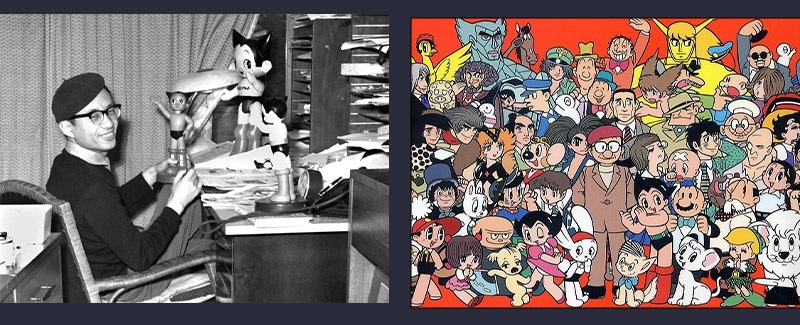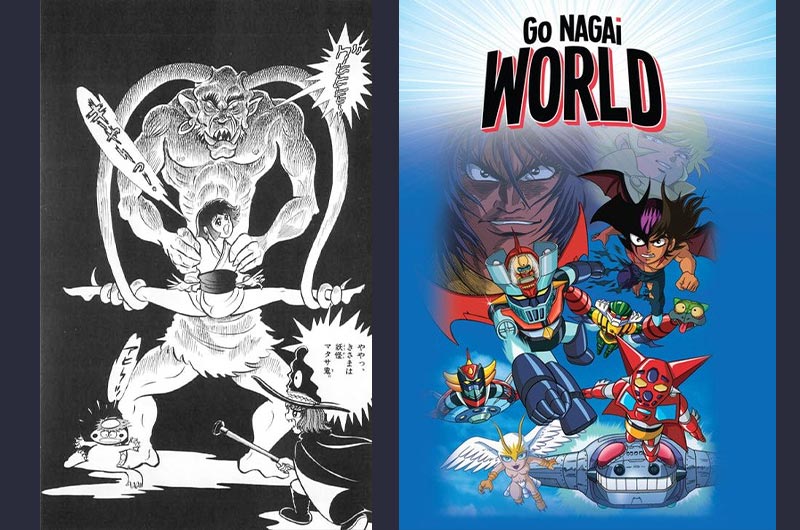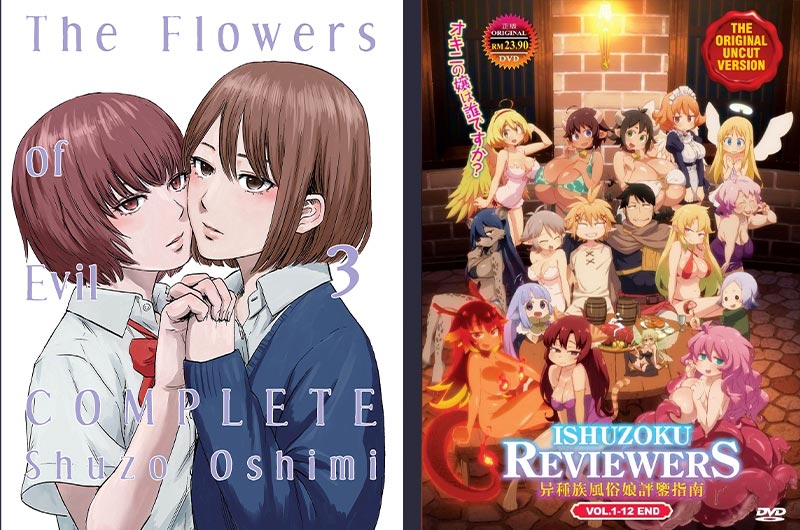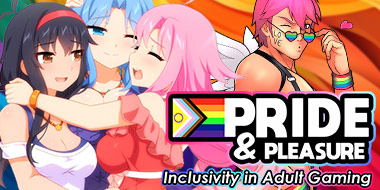How Hentai Changed Anime Forever

- Nutaku
- 2022/06/28
“Yes, I do. Hentai, too!"
This was Samuel L. Jackson’s now-famous quip when asked if he liked anime. He’s not alone – that’s where most people fall on it! Hentai is seen as a distinct, separate entity from the anime industry by many. However, nothing could be further from the truth! In actuality, ecchi and hentai have been some of the biggest indicators of anime trends since the 1970s!
In fact, sexuality is baked into the very creation of anime and manga itself. Osamu Tezuka – the “God of Manga” himself – made plenty of adult manga in his time. While stories like Ayako, Barbara, and Book of Human Insects aren’t necessarily pornographic, they are sexual in nature and do trade in very eroticized pictures of lovely cartoon ladies. He even drew furry porn that he kept in his private collection for years! Of course, it’s worth noting that Tezuka wasn’t alone in this. The studio built by ol’ Uncle Walt often produced sketches and animations of a certain miniature mouse in various states of undress. And that’s not even getting into the infamous alleged menage a deux between a famous yammering sailor and a beloved red-dressed ‘toon diva!

C. Left, Tezuka Osamu at play with his Astro Boy puppets. Right, Osamu Tezuka’s Star System.
Turns out? The best artists are also the horniest artists. Who’d have thought!
Out of the medium birthed by Tezuka’s hand, more and more artists began to emerge from the now-booming manga industry. New talent meant new perspectives, and new perspectives meant new boundaries to push. Going into the 1970s, artists like Go Nagai pushed the boundaries of what was acceptable to show to teenagers in manga. Controversy erupted around Nagai’s series, a portion of which featured nudity and sexualization of younger characters, but popular opinion won out. Series like Shameless School and Cutie Honey were too big to fail, and went on to catapult Nagai into monolithic fame. His impact on the direction of anime and manga is often underappreciated, but if you’re into the lustier side of anime, you owe a debt of gratitude to this icon.

C. Left, Dororon Enma-Kun - Vol.1 Chapter 13: Tale Of The Crotch Splitter. Right, Go Nagai World (1991).
Going into the ‘80s, sexualization was becoming more normalized in anime and manga. The boom of home video gave rise to OVAs (Original Video Animation), and fan conventions gave rise to doujin. Both of these would have, perhaps, the biggest impact on where anime fandom ended up today. Less restrictions to what could be put in anime led to the inception of hentai animation as we know it, and doujinshi grew out of fan conventions. Smutty OVAs helped cultivate a fresh wave of anime talent that would go on to work on defining productions of the ‘80s and ‘90s. Meanwhile, the doujin scene would go on to become a staple institution of the manga industry; to this day, artists behind some of the biggest series get their start making porn!
Here's an example: are you a fan of Nagatoro-chan? Do a little research into the artist, Nanashii, and what he was working on in the late 00s into the early 10s.
(Go ahead. We’ll wait.)
It goes deeper than that, though. The hentai games and manga of the 90s and 00s would go on to define popular trends in the industry. By the 2010s, it became more and more common to be hit with barrages of series per season that felt like thinly veiled fetish material. Series like Oreimo, Kodomo no Jikan, Re-Do of Healer… these are all shows that have hentai roots in their premises, either baked into the plot or mentioned in text. And do you remember that big boom of shows a few years back, focused on blonde girls with tans? Yeah, you have late 00s fetish art of ganguro to thank for that! Character archetypes, design charm points, vocal affectations… so much of what otaku-focused productions rely on are those. A 2006 series, Welcome to the NHK, is a searing and hilarious look into this phenomenon of how hentai molded modern otaku tastes.
Now, it must be asked: is that okay? While it’s disingenuous to say that hentai guides the trends of every single facet of successful manga (there’s too much of it in print for that to be true,) it can be alarming to take a step back and realize how much of what we love is built on fetish. Series intended for audiences not able to comprehend adult material can and often are influenced by that adult material. It’s hard to look at a lot of modern shonen series, for instance, and realize how fan service laden they’ve become. Meanwhile, the modern hentai landscape has shriveled by comparison. Less new hentai is made per year than ever, and much of it is operating on a shoestring budget. The high-effort, hand-crafted erotica of the 80s and 90s is no more. The industry has changed, and again, we have to ask: is that okay?
We can’t answer that. (Hey – we’re hentai merchants, not sociologists!) But what we can say is that regardless of how you feel, there’s no denying part of what makes anime so awe-inspiring is its willingness to grapple with things other countries aren’t in their animation. While some of it can seem a bit extreme, or even downright weird, you have to acknowledge that some great things come out of it. Mature explorations of sexuality like Flowers of Evil and sex-positive fantasies like Interspecies Reviewers couldn’t happen without these industry shifts and adult content influences. If we’re being honest, we’d rather sift through a glut of graphic garbo to find good stuff than not even have any of that good stuff to look forward to. But hey – that’s just us!

C. Left, The Flowers of Evil - Complete 3 by Shuzo Oshimi (2018). Right Ishuzoku Reviewers Vol. 1-12 (2020).
How about you, though? Do you like how much hornier anime has gotten over the past decade or two? Are there any particular industry trends you’ve noticed over time? We’d love to hear what you have to say in our official discord server!




